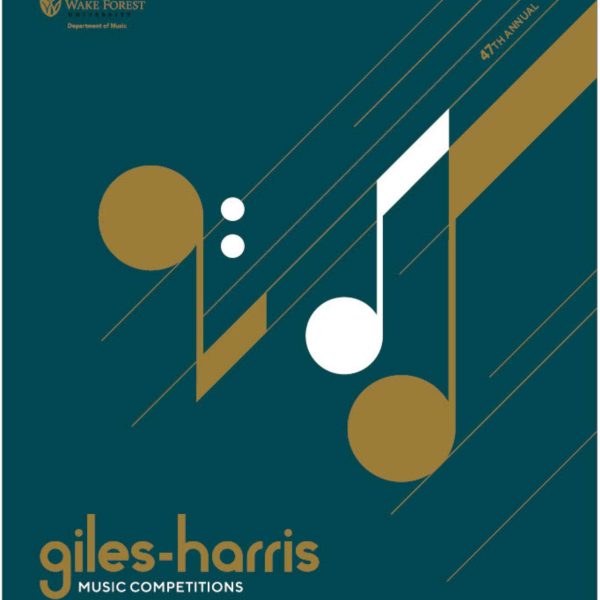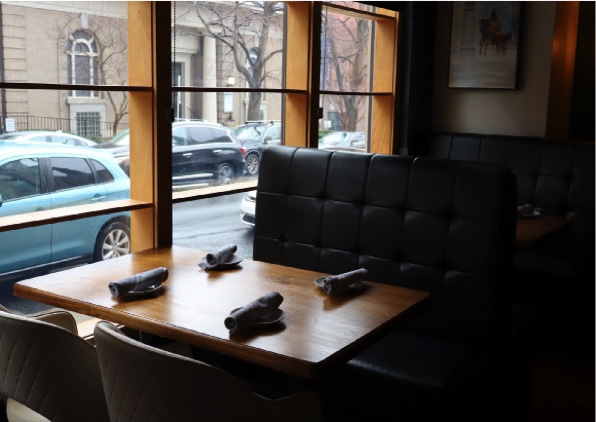Life through the lens – Maahla Fofack

September 16, 2021
In this edition, the column features a glimpse into life through the lens of Maahla Fofack, a junior from Rockville, Md. She is pursuing a degree in biochemistry with a concentration in molecular biology.
She serves as an Intercultural Ambassador and wishes to leave an impact on the Wake Forest community:
“I’m interested in being a positive agent of change in my community but I’m also equally invested in exposing myself and others to different cultures and practices,” she said, “I hope to be able to create and support a socially diverse campus enabling the intermingling of all types of students.”
Traveling abroad can be quite a daunting task. The exhaustive lists of to-dos includes arriving at the airport on time, making sure your luggage isn’t overweight, finding your gate, catching your layover flight, getting through customs before finally figuring out how to navigate to a country that’s main language probably isn’t English.
All of these difficulties are a given on most trips, but the added stress of traveling while Black sometimes exacerbates some of these common dilemmas.
Getting through customs becomes a bit of a problem when security questions your motive for visiting the country. Asking for directions becomes nearly impossible when the people of the country you’re visiting have either never seen a Black person before, or have preconceived notions of Blackness which cause them to be fearful.
I must preface that I am by no means a travel expert. The majority of the trips I’ve taken have been with my family — which has given me a sense of added security and comfort. Despite this, I’ve come up with a list of my top three favorite places that I’ve traveled, basing my ratings on tourist attractions, cuisine, transportation and activities — while also factoring in how Blackness affects the overall experience.
Beginning with my third favorite place to visit: Dar es Salaam, Tanzania. I visited Tanzania in March of 2016. The most tiring aspect of the trip was the journey itself. Flying out of an airport on the East Coast means you would generally have two layovers, the first being somewhere in Europe or Dubai, and the second likely being in either Addis Ababa, Ethiopia, or Nairobi, Kenya.
Landing in Dar es Salaam and stepping out of the airport, you are already immersed in the country. There is the hubbub of the people speaking in Swahili waiting for family to arrive, vendors selling street food and of course, the heat and humidity. I will say that because I’m West African, I have a slight bias in favor of Tanzania. Furthermore, I generally didn’t experience any microaggressions here because everyone around me looked like me, but this can also be attributed to the fact that Tanzanians in general are extremely warm and welcoming people.
Although Swahili is the national language, the moment I interacted with a Tanzanian and they realized that I wasn’t a native, they switched to English to accommodate me.
My favorite dish and probably the country’s most recognizable is chapati, which is similar to naan or pita bread. The best part about traveling to Tanzania was the local produce. I find that fruits outside of Western countries generally taste better just because they’re not mass-produced to be imported. As a result, they’re often fresher.
Finally, my favorite attraction that I visited was Zanzibar, a small island with pristine beaches off of the coast of Tanzania. Often, when people think of visiting countries in Africa, they imagine traveling to South Africa or Egypt. But Tanzania, through it its beautiful savannahs, national parks, and kind people has made it to No. 3.
Second on my list is Japan. I visited Japan in October 2017. The general tourist cities that people go to are Tokyo and Yokohama, although I visited Tokyo and Kyoto. Despite being a long journey, the trip was well worth it. Similar to Tanzania, Japan’s population is primarily comprised of its natives.
Despite this, my interaction with Japanese people surpassed my expectations. Oftentimes when traveling while Black, you’ll receive stares from passersby, usually out of malice or ignorance. Yet, in Japan, I quickly realized that the stares I was receiving were out of admiration and confusion. I was approached by several people asking for photos and comparing me to the likes of Michelle Obama.
Asking for directions on the street was simple — and, there were a few times when we were approached by Japanese people offering help after they noticed we looked visibly lost. There are so many places to visit in Japan. I visited temples, Harajuku station, rode a bullet train and sang a lot of karaoke.
Getting from place to place can be a bit of a daunting task — although the infrastructure for public transportation is well developed, I would assume that most tourists don’t read Japanese. With the rise in the popularity of anime, Japanese cuisine has become extremely popular, so much so that even as a foreigner, I was already familiar with sushi, ramen, udon and Japanese curry. This is why — in addition to recommending local cuisine — I would also recommend at least visiting a 7-Eleven or a McDonald’s because their menu items are drastically different compared to those of their U.S. counterparts.
Before revealing my favorite place I’d like to note some honorable mentions. The first is Tunisia, for its welcoming environment, which I think is attributed to Arab culture as a whole. Finally, Vienna, Austria — not only was it architecturally stunning, but the Christmas market was bustling with life.
My favorite place I have traveled to is Lisbon, Portugal. Lisbon is a small but diverse city that is easily navigable via foot, public transportation or taxi. The most reassuring element of the city is that, despite being surrounded by tourists, Lisbon is still able to maintain its cultural identity.
Many of the people who work in Lisbon are immigrants, which provides numerous options for cuisine. There are plenty of Indian and Mediterranean-style restaurants, but Portuguese cuisine is also very popular here. Their famous pastry, nata, is of my favorites.
Lisbon is also famous for its colonialist history tourist attractions, which include castles, towers and monuments. However, my favorite activity by far was visiting the aquarium because it was interactive and extremely well-organized and designed. What distinguished Lisbon from the other two countries was the fact that I never once felt like a Black tourist — I just felt like a tourist.
In summary, as grateful as I am to have had the opportunity to travel to these cities, — and while they may be tourist-friendly places where your Blackness doesn’t feel like a setback — it’s important to realize that life as a tourist is different than life as a resident. Nearly all of the countries I’ve mentioned have had their share of racial tension against their Black members of society. Austro-Africans adopting the BLM movement have begun to speak up against prejudice within their country. Similarly, Black Tunisians and sub-Saharan African immigrants struggle to get the white and Arab communities to acknowledge racism within the country.






















Maureen • Sep 17, 2021 at 8:33 am
I love this! I appreciate with how much detail she explored what she enjoyed about the places, coupled with how her background influenced or enhanced these experiences, very balanced. This makes me want to travel!